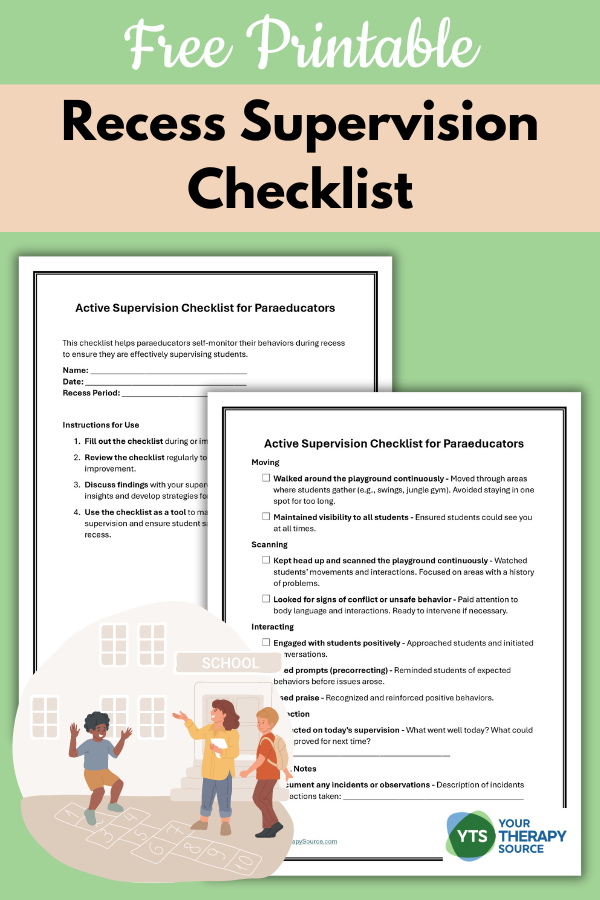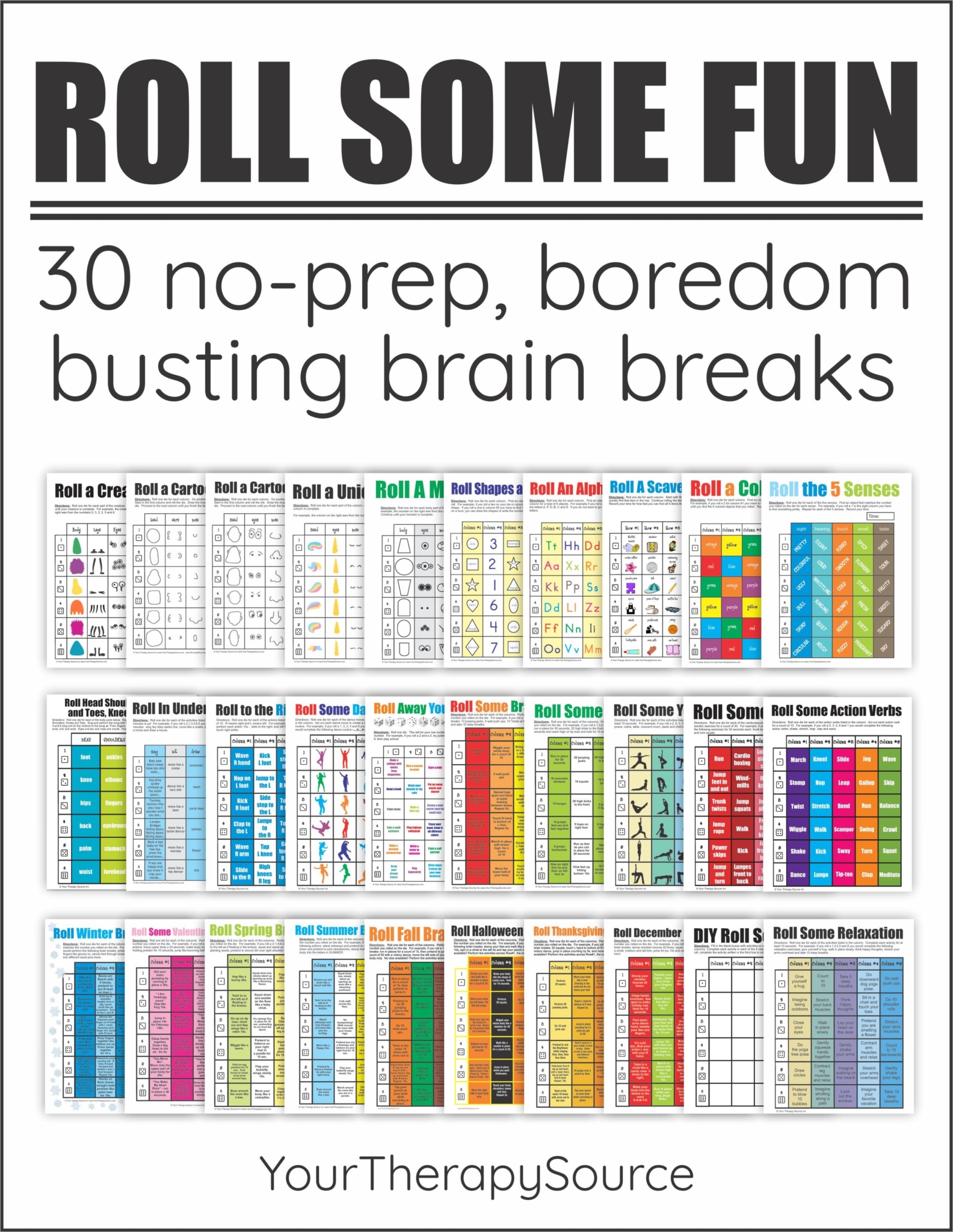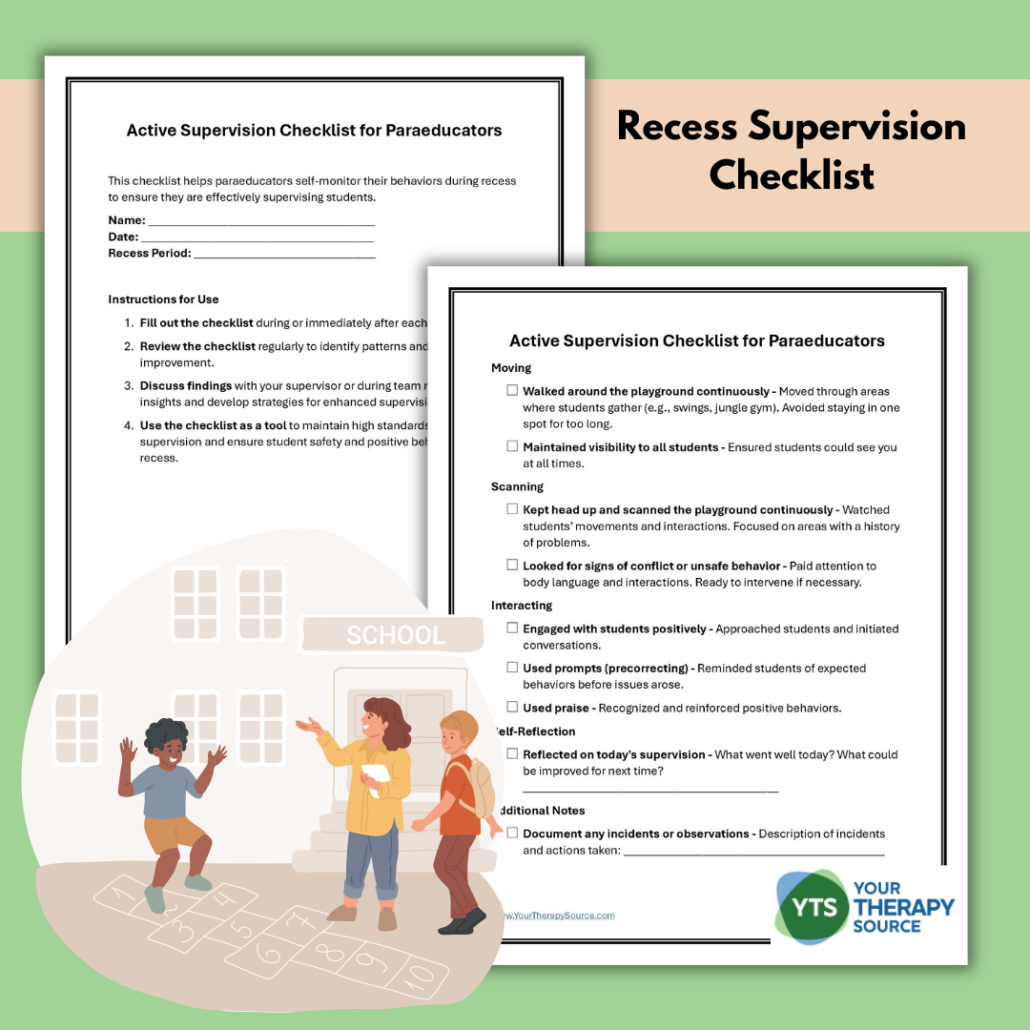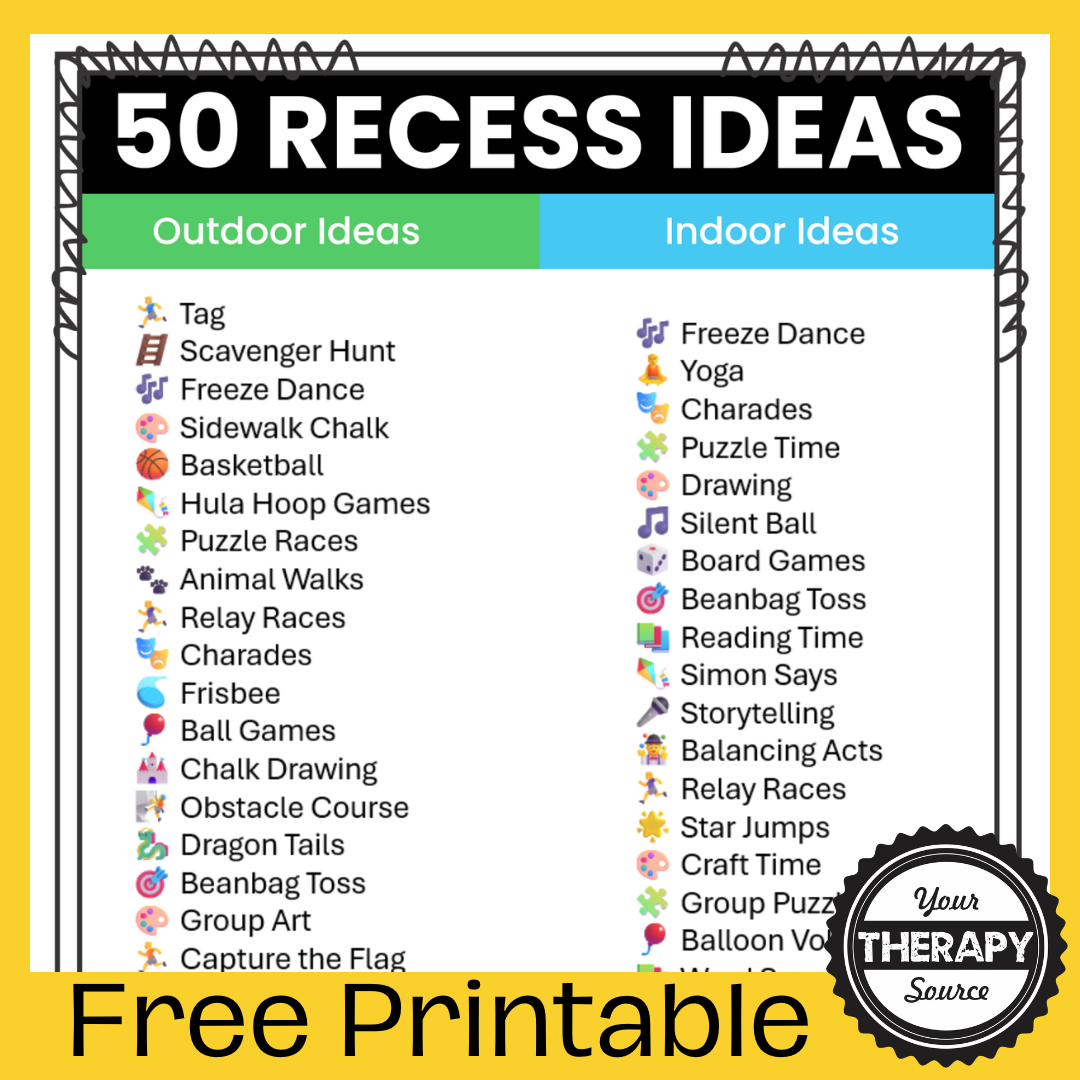Recess Supervision – What Does the Research Say?

Recess is a critical part of the school day where students can play, socialize, and recharge. However, it can also be a time when behavioral issues arise. Effective recess supervision is essential to ensure a safe and positive environment for all students. This guide provides insights into the challenges of recess supervision, highlights the role of paraeducators, and presents research-based strategies to improve active supervision.
You can download a FREE Recess Supervision Self-Management Checklist at the bottom of the post.
Why Is Recess Supervision an Issue?
Recess supervision is crucial because it directly impacts student safety and behavior. Inadequate supervision can lead to increased incidents of bullying, accidents, and other behavioral problems. Active supervision, which includes moving, scanning, and interacting with students, helps prevent these issues by maintaining a visible adult presence and fostering positive interactions.
The Role of Paraeducators
Paraeducators play a vital role in supervising students during recess. They support teachers by managing student behavior, providing instructional support, and ensuring a safe environment. However, paraeducators often face challenges such as lack of training, insufficient resources, and the need to manage multiple behaviors simultaneously.
What Does the Research Say About Recess Supervision?
Research highlights several key findings and strategies to improve recess supervision:
- Components of Active Supervision:
- Moving: This involves actively walking around the playground, especially in areas where students tend to gather or where problems are more likely to occur. Movement helps supervisors maintain a visible presence, which can deter negative behaviors and quickly address issues as they arise.
- Scanning: Scanning involves continuously watching students and following their movements across the playground. Effective scanning requires vigilance and the ability to anticipate potential issues by observing student interactions and body language.
- Interacting: Interacting with students is crucial for building rapport and reinforcing positive behaviors. This includes:
- Prompting (Precorrecting): Reminding students of expected behaviors before issues arise, setting a positive tone and clear expectations.
- Praising: Recognizing and reinforcing positive behaviors to encourage their repetition and promote a supportive environment.
- Impact of Training and Self-Management:
- Studies have shown that paraeducators can successfully implement self-management strategies to monitor and improve their supervision behaviors. Tools like Direct Behavior Ratings (DBRs) help paraeducators self-monitor and increase their use of positive interactions.
- Challenges in Measuring Supervision Behaviors:
- Research indicates that while interactions (prompts and praise) can be effectively increased through training, changes in movement and scanning are harder to achieve. Factors such as location-specific supervision needs and high baseline levels of scanning can limit measurable improvements in these areas.

Roll Some Fun Brain Breaks UPDATED
Example of Active Supervision During Recess
Here is an example of a paraeducator using different techniques to supervise students at recess.
Moving
During recess, a paraeducator actively walks around the playground. She starts by walking through areas where students often gather, such as the swings and the jungle gym. The paraeducator ensures she is visible to all students by moving continuously and not staying in one spot for too long. This visible presence helps deter negative behaviors and allows her to quickly respond if any issues arise.
Scanning
As she moves, she continuously scans the playground. She keeps her head up and watches the students’ movements, paying particular attention to areas where problems have occurred in the past. The paraeducator notices a group of students gathering near the slide and focuses on their interactions. She watches for any signs of conflict or unsafe behavior, ready to intervene if necessary.
Interacting
The paraeducator interacts with the students to build rapport and reinforce positive behavior. She approaches a group of students playing tag and reminds them to be mindful of their surroundings, saying, “Remember to watch out for your friends and play safely.” This is an example of prompting (precorrecting) behavior.
Later, she sees a student helping another student up after a fall. She walks over and praises the student, saying, “Great job helping your friend! That’s very kind of you.” This positive reinforcement encourages the student to continue displaying helpful behavior.
Strategies for Effective Recess Supervision
- Implementing Training Programs:
- Schools should provide regular, brief training sessions focused on active supervision techniques. Training should cover effectively moving, scanning, and interacting with students during recess.
- Using Self-Management Tools:
- Equip paraeducators with tools like DBRs and checklists to help them self-monitor their behaviors. Regularly review these tools to ensure they are being used effectively and adjust as needed.
- Focusing on Positive Interactions:
- Encourage paraeducators to use prompts and praise more. Positive interactions are known to improve student behavior and create a supportive playground environment.
- Addressing Contextual Challenges:
- Plan for indoor activities during inclement weather to maintain consistent supervision practices. Recognize that some locations may require less movement, but encourage vigilant scanning and interaction.
- Minimizing Observer Influence:
- To reduce observer bias, use multiple observers and maintain high interobserver agreement (IOA). Remind staff of the importance of consistent supervision practices, regardless of observation.
Implications for Schools and Researchers
For Schools:
- Provide ongoing professional development to equip paraeducators with the necessary skills for effective supervision.
- Foster a culture of positive interactions and active supervision to enhance student safety and behavior during recess.
For Researchers:
- Continue exploring comprehensive measurement of active supervision behaviors and their impact on student behavior.
- Investigate whether specific components of active supervision are more critical than others and how these elements interact to support student behavior.
Effective recess supervision is essential for maintaining a safe and positive environment for students. By implementing research-based strategies, providing regular training, and using self-management tools, paraeducators, teachers, and school-based therapists can enhance their supervision practices. Continued research and inclusive practices will ensure that all students benefit from effective and supportive recess supervision.
Reference
Kern, L., Simonsen, B., Sugai, G., Freeman, J., Lewis, T. J., & Chafouleas, S. M. (2024). Supporting Paraeducators and their Use of Active Supervision at Recess: An Exploratory Study. Teacher Education and Special Education, 0(0). https://doi-org.ezproxy.cul.columbia.edu/10.1177/08884064241234631
Download your FREE Recess Supervision Checklist Here
Enter your email to get access to the FREE checklist.



